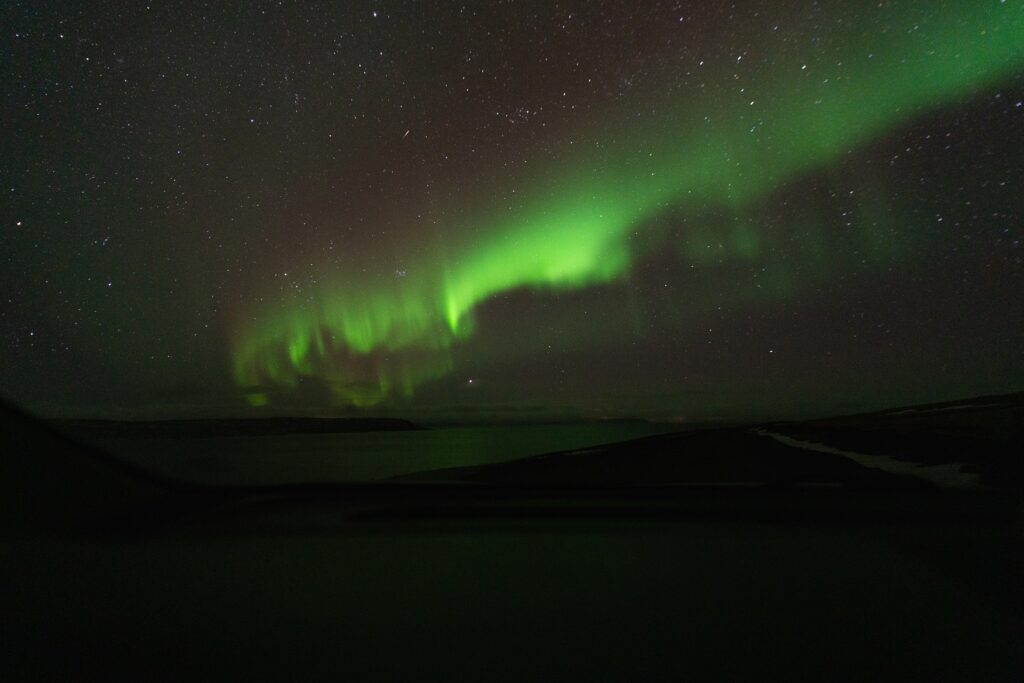When we planned our trip to Iceland, we wanted to cover the entire country (some 2,000 kilometers) in March in just one week. We had our doubts about whether we’d be able to complete the itinerary in such a short time. But, with the right choice of accommodation, organization along Route 1, and making the most of our days, such a trip can become a reality. Here we describe our daily schedule, the time we spent on the road, the number of kilometers we covered and the places we stayed.
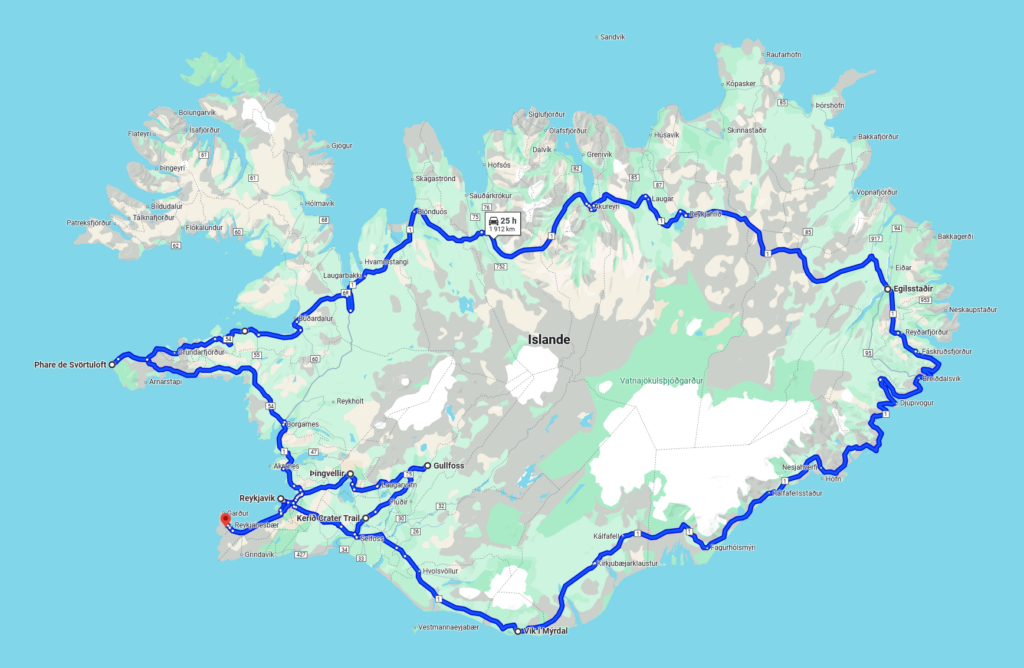
First day
Depart from Reykjavik at 9 a.m. for the Golden Circle, the island’s main tourist attraction.
Our first stop is Thingvellir National Park, with a hike in the Almannagja region and a visit to the first waterfall, Oxararfoss.
We continue on to the Strokkur geyser, which shoots hot water to a height of 20 metres every 8 to 10 minutes, before a visit to the Gulfoss waterfall, and a smaller one nearby, Faxi.
On the way back to Reykjavik, we climb the Kerid crater and its inland lake, frozen during our stay in March.
In the evening, we return to Reykjavik for our accommodation.
A journey of 4 hours and 250 kilometers.
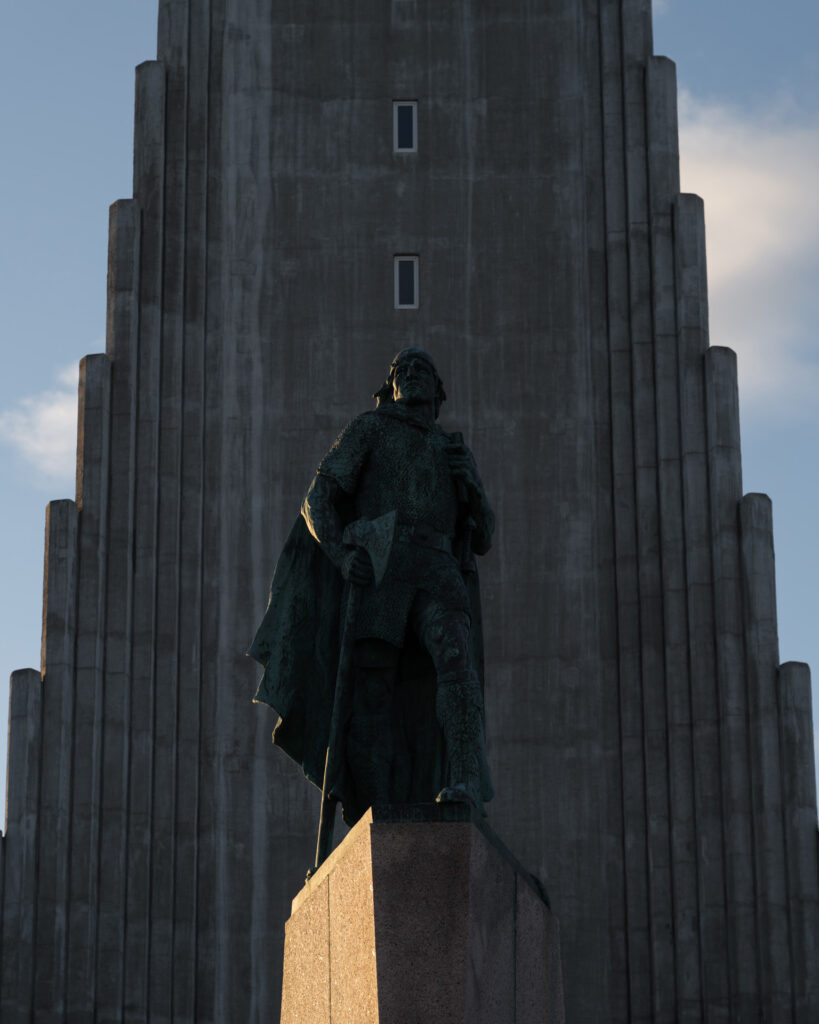
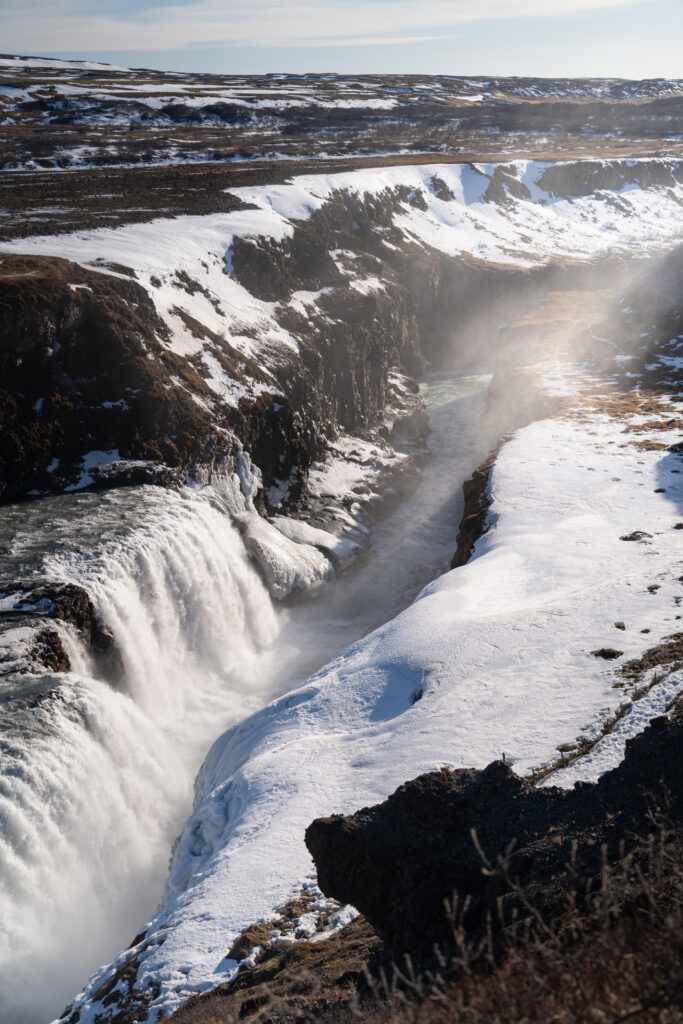
Second day
Head for the western part of Iceland, and in particular the Snaefellsnes peninsula.
This region is home to the Bjarnafoss waterfall, the Snaefellsjokull volcano, the Svortuloft lighthouse overlooking the wild Icelandic coastline, the famous Kirkjufell mountain and the surrounding waterfalls of the same name.
Continuing on Route 1, we arrive late afternoon in the Hvammstangi region, where we spend the night.
A journey of 6h30 and 450 kilometers.
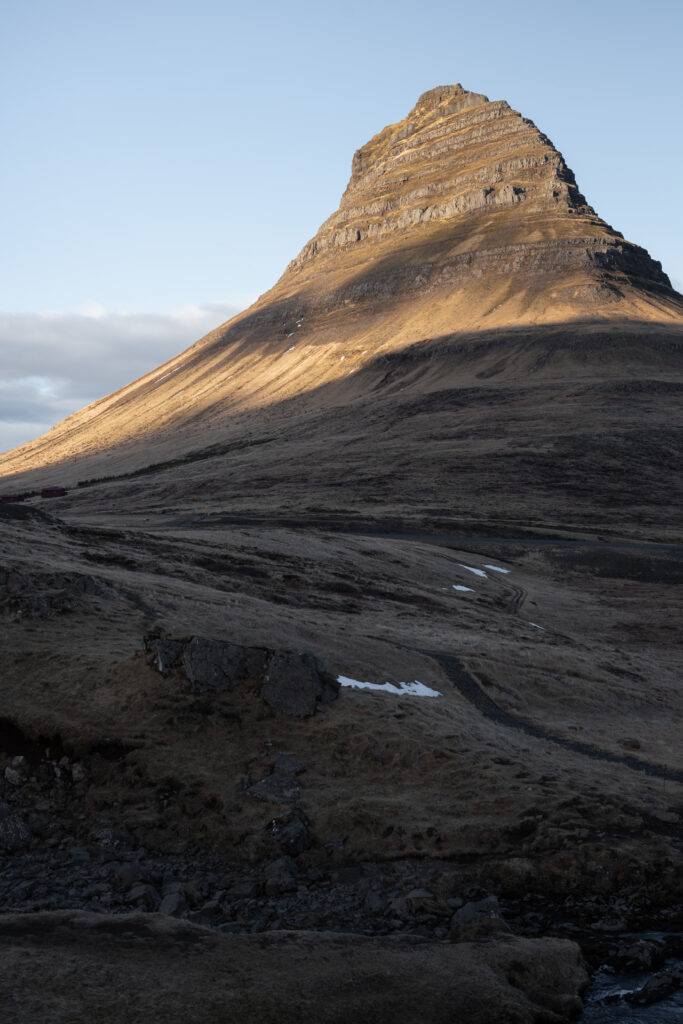
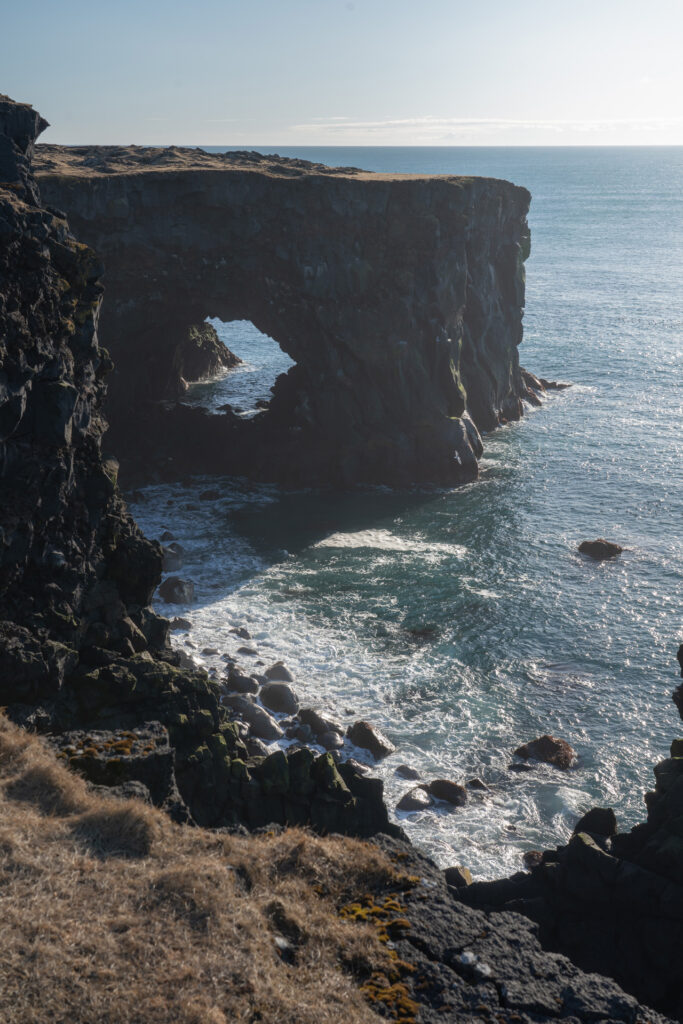
Third day
We are now in the northern part of Iceland. Route 1 takes us to the capital of the north, Akureyri, a small town inside a fjord.
We continue the road trip with a stop at the snow-capped waterfalls of Geitafoss and Godafoss, before heading for the next hotel on the shores of Lake Myvatn.
From here, it’s on to the Hverir geothermal zone, an otherworldly landscape sculpted by sulfur and its characteristic smell.
One last stop before nightfall: the Dettifoss waterfalls, perhaps the most impressive and powerful waterfalls in Iceland.
A journey of 4h30 and 350 kilometers.
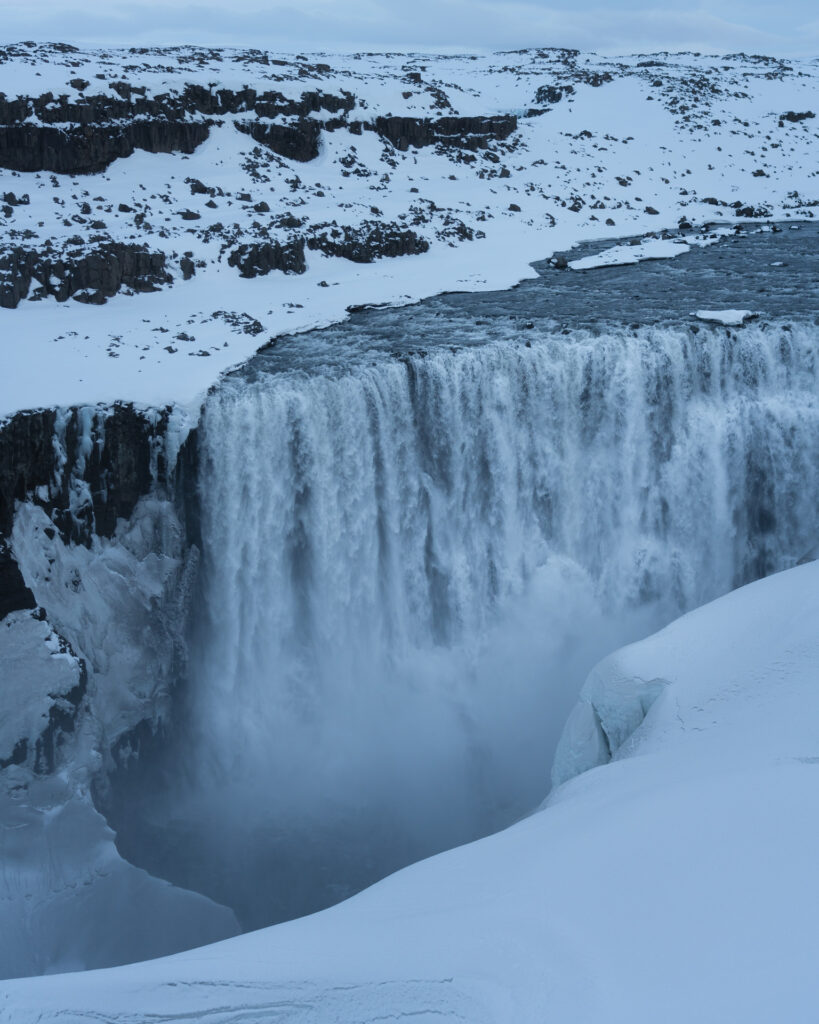
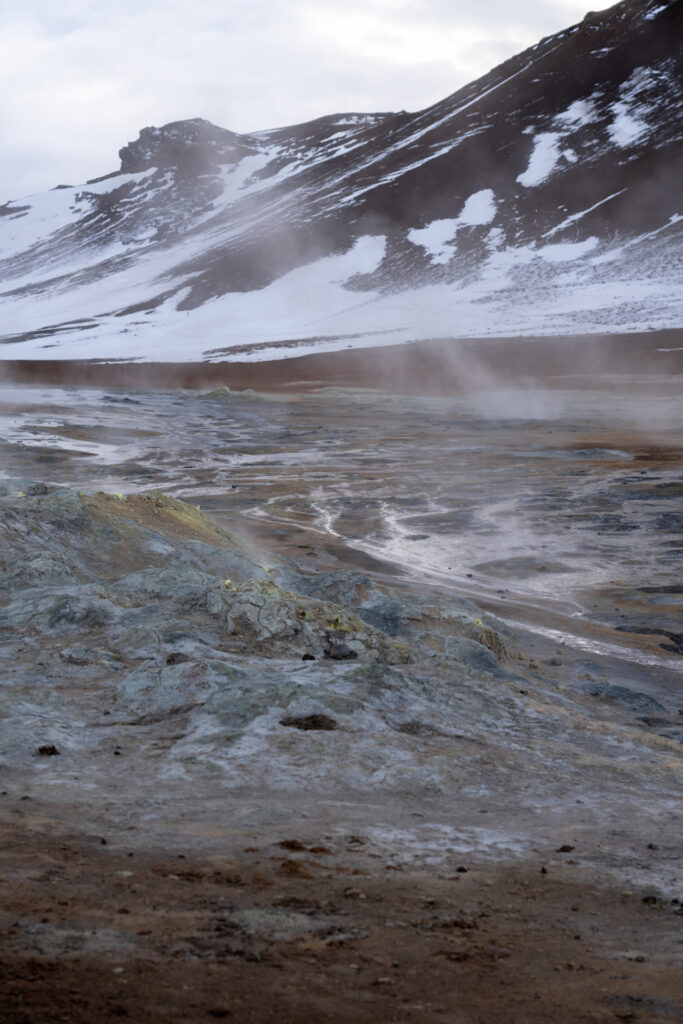
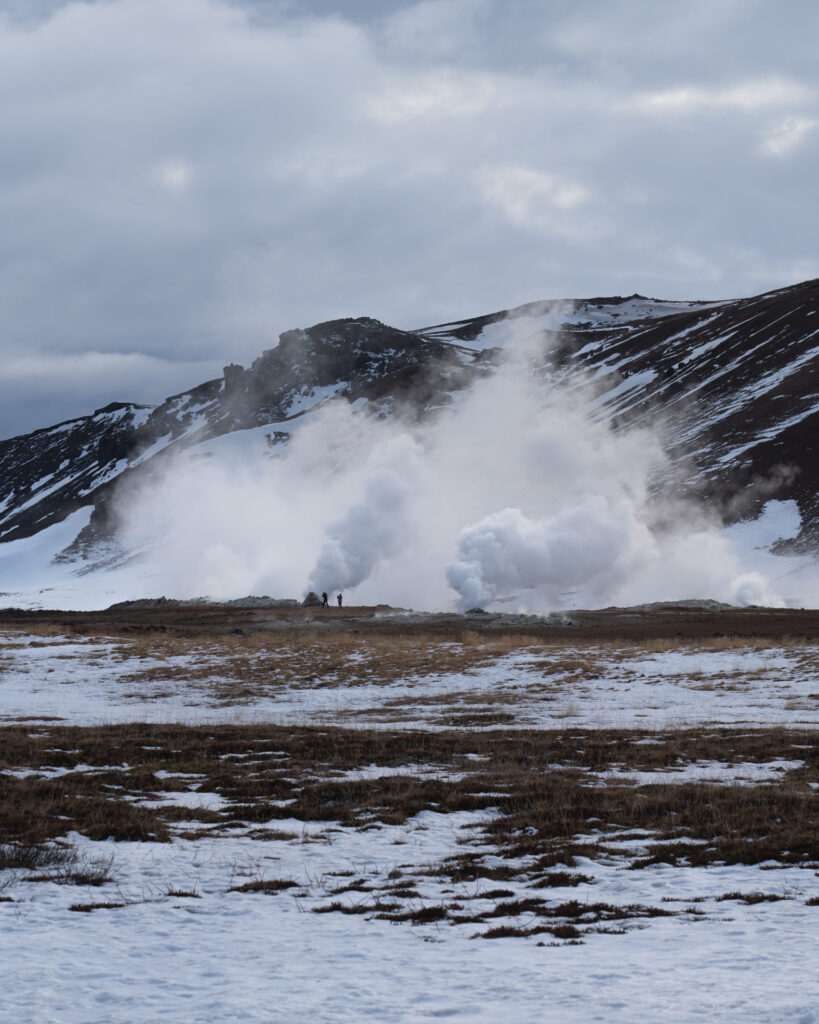
Fourth day
Day 4 begins with a one-hour hike between the volcanic massifs of Dimmuborgir before descending into the crystal-clear Grjotagja cave.
Returning to Route 1, we head east towards the Studlagil Gorge. The geometric shapes of the rocks here are breathtaking.
After an unsuccessful attempt to reach the Litlanesfoss waterfall due to strong winds, we arrive in the town of Egilsstadir, where we spend the night.
A journey of 2h30 and 200 kilometers.
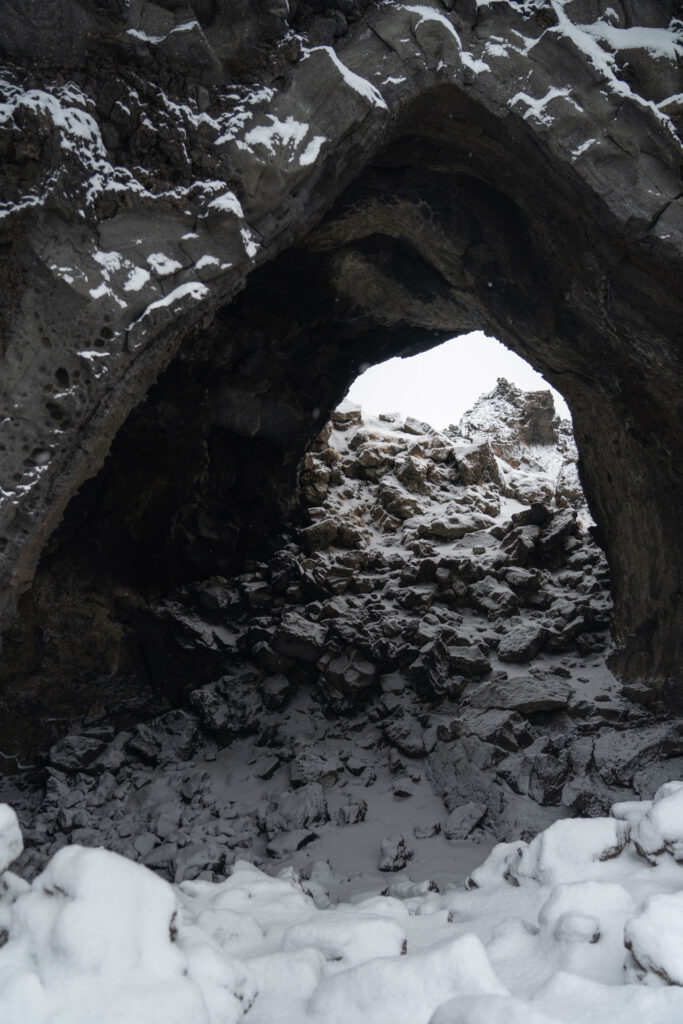
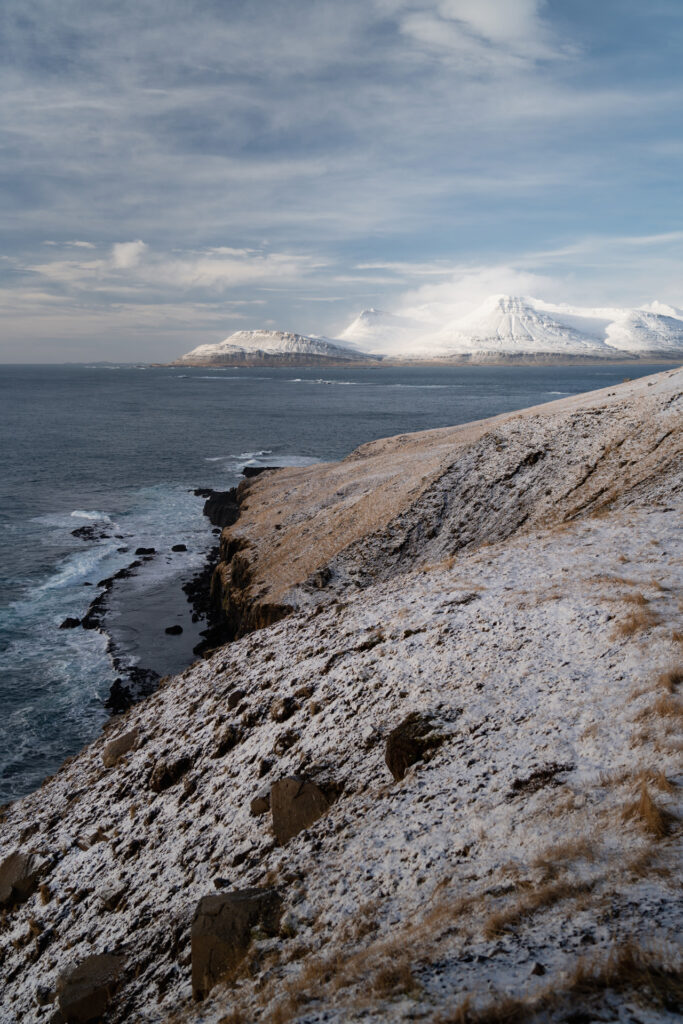
Fifth day
We continue southwards, crossing the fjords of eastern Iceland and taking in the beautiful scenery along the way.
After a quick stop in front of the Stokksnes mountains, we make our way to Diamond Beach. Here lies Iceland’s largest glacier and one of the largest in Europe, the Vatnajokull. Between the glacier and the beach lies a lake, Jokulsarlon. The scenery is magical: its floating chunks of ice or those deposited on the shore give the whole region a different color. With a little luck, seals can even be seen in the distance.
Not far from Diamond Beach is Mulagljufur, Iceland’s most beautiful gorge. A hike here is not to be missed. Waterfalls and a variety of bird species complete a magnificent landscape.
Before sunset, we visit the spectacular Svinafellsjokull glacier. It’s a glacier that’s easy to get close to and walk on.
We spend the evening in the town of Hofn, next to the glacier.
A journey of 8 hours and 650 kilometers.
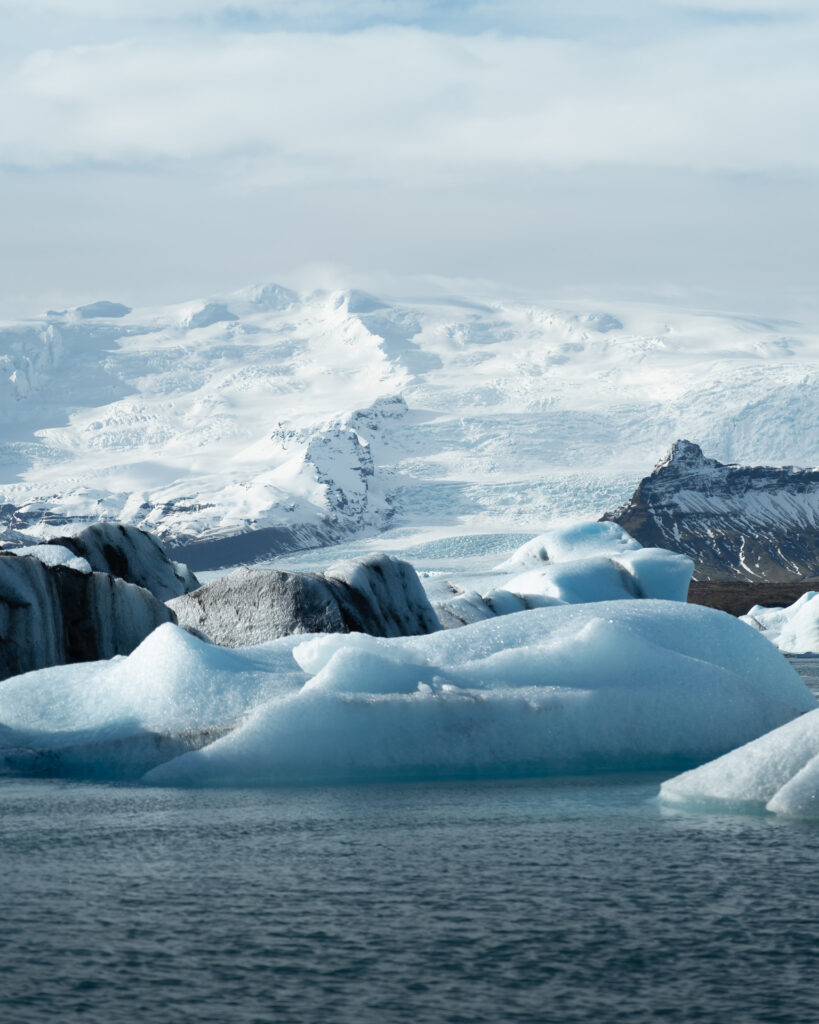
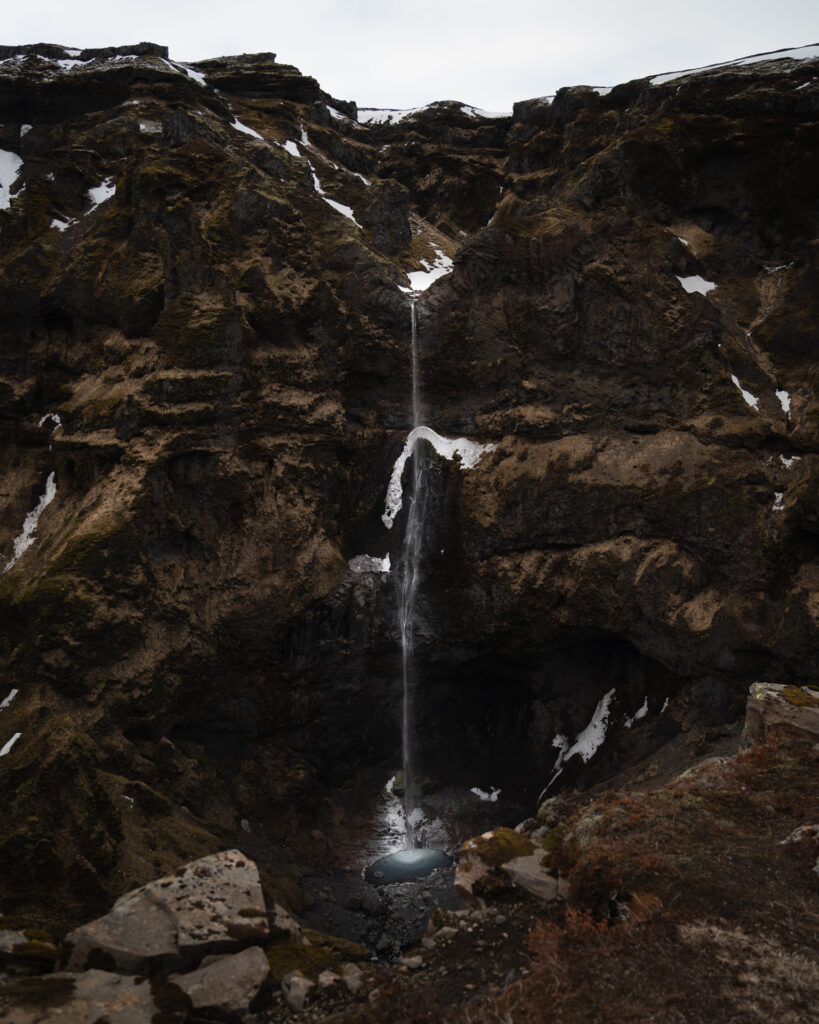
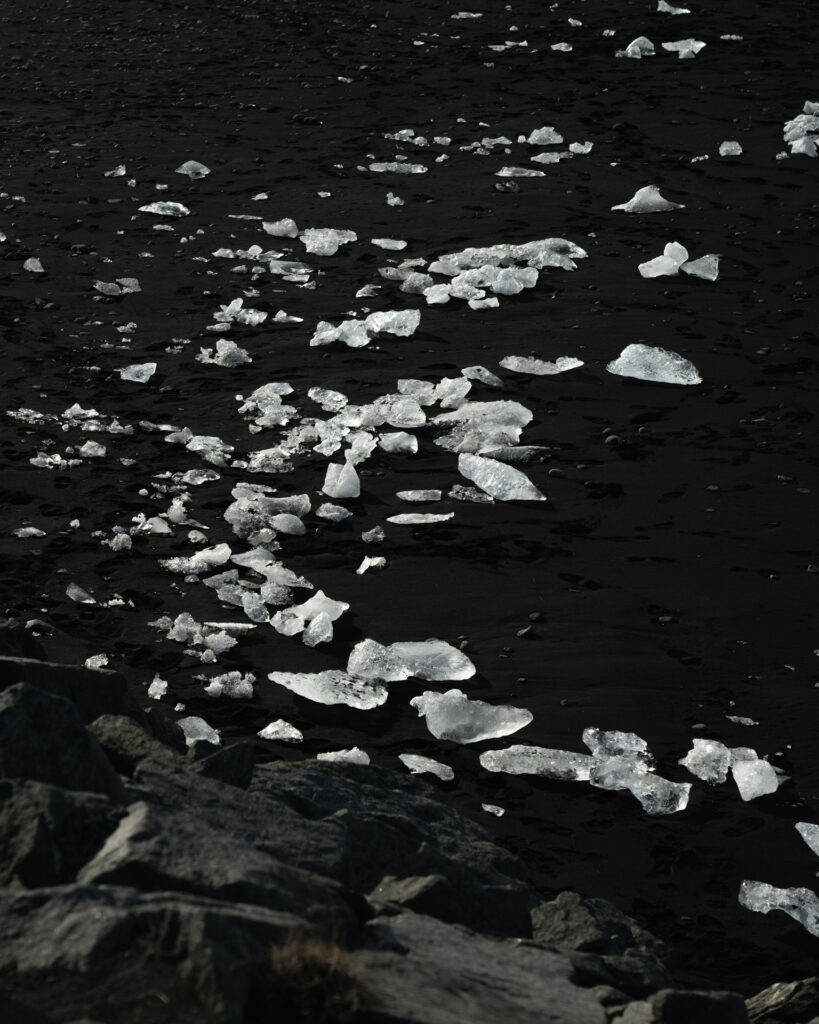
Sixth day
First stop, the charming Hofskirkja church with its grass-covered roof.
Then on to Svartifoss waterfall and Lomagnupur mountain. Unfortunately for us, a snowstorm broke out that day, making weather conditions particularly difficult. But this didn’t prevent us from visiting Reynisfjara beach and its black volcanic sand.
Further west, we reach Skogafoss, one of Iceland’s most famous waterfalls. This fame overshadows another waterfall nestling at the bottom of a valley, Knernufoss, a must-see half-hour’s walk from Skogafoss.
In the evening, we stay near the town of Vik.
A journey of 5 hours and 350 kilometers.
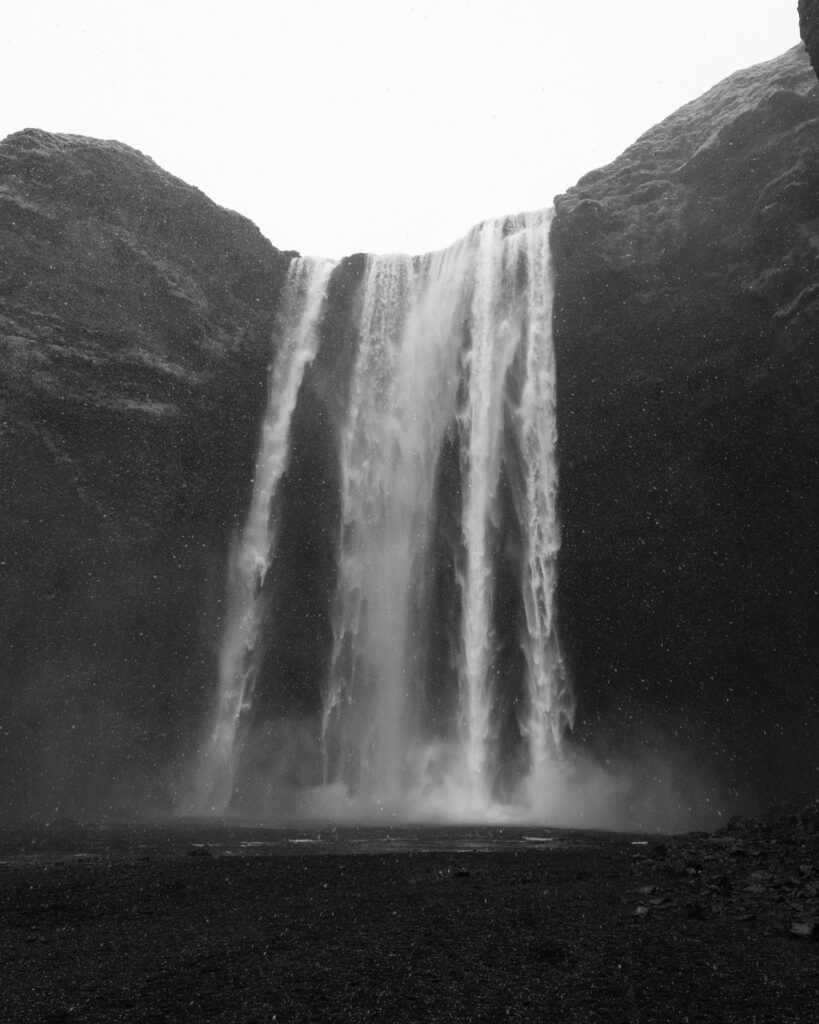
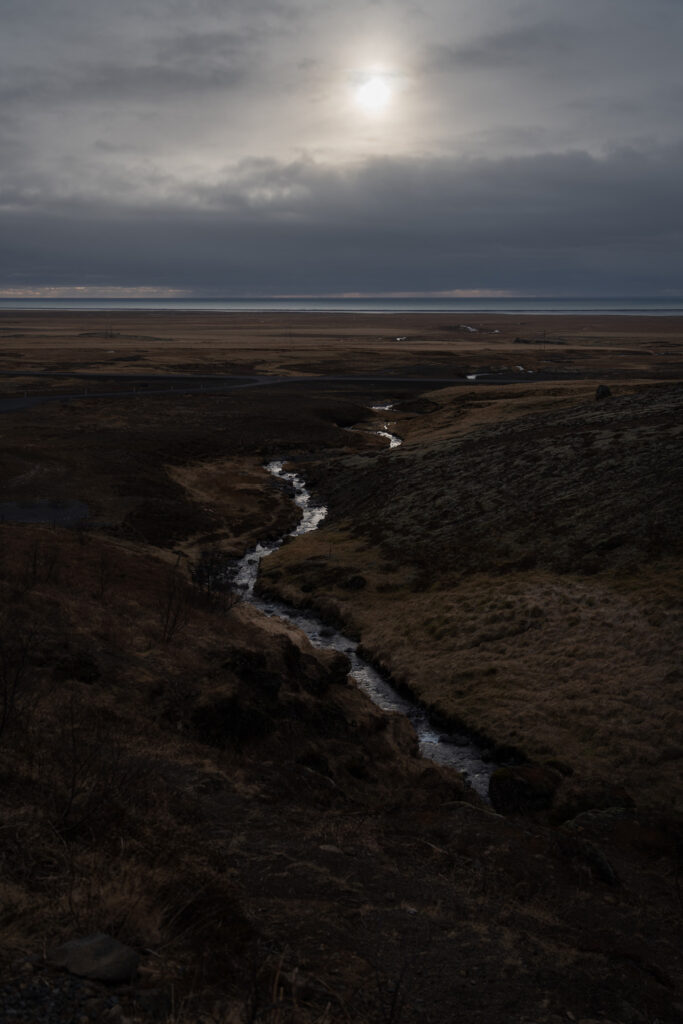
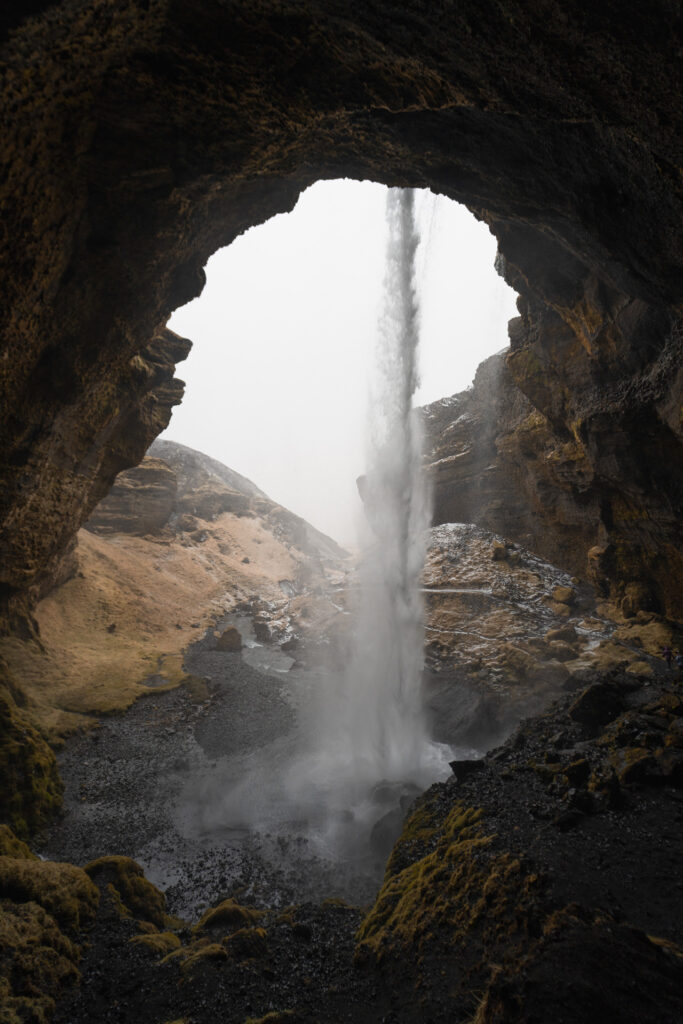
Last day
The last day of our trip begins early in the morning at the Dyrholaey Viewpoint lighthouse, overlooking the ocean and offering a unique sunrise image of Reynisfjara’s black beach.
On the way back to Reykjavik, we make a few final stops at the Seljalandsfoss and Gljufrabui waterfalls, followed by a walk over lava fields from recent volcanic eruptions on the Reykjanes peninsula.
Before ending this epic itinerary, our final stop takes us to the Blue Lagoon hot springs, one of Iceland’s most popular attractions just a stone’s throw from Keflavik airport.
A journey of 3h30 and 250 kilometers.
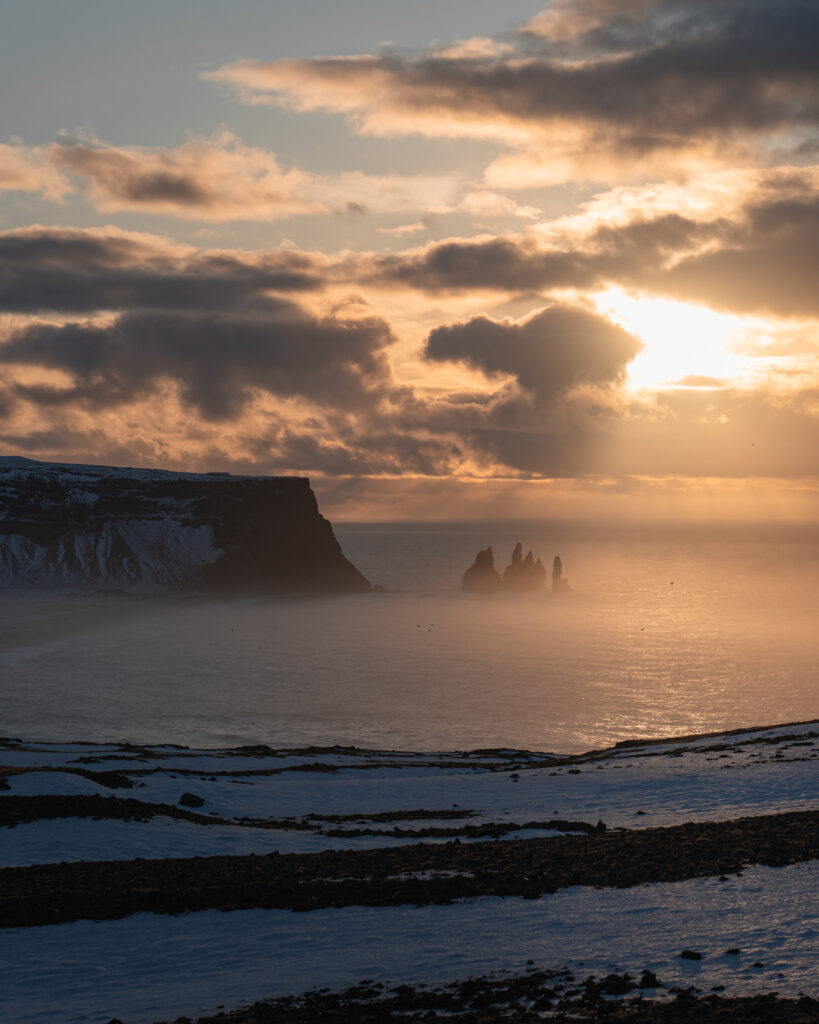
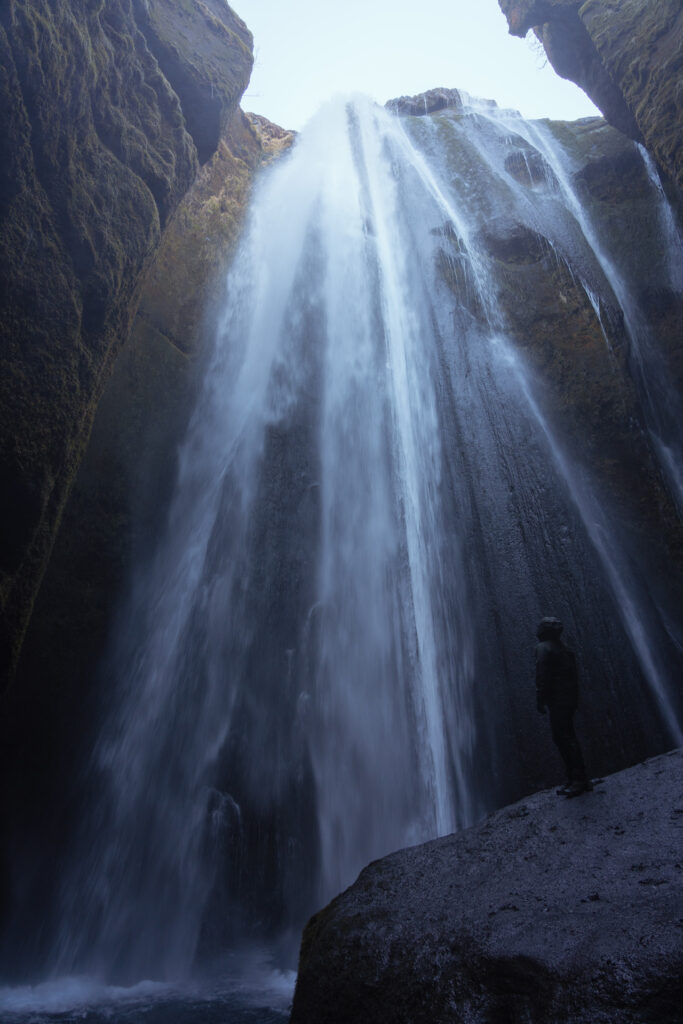
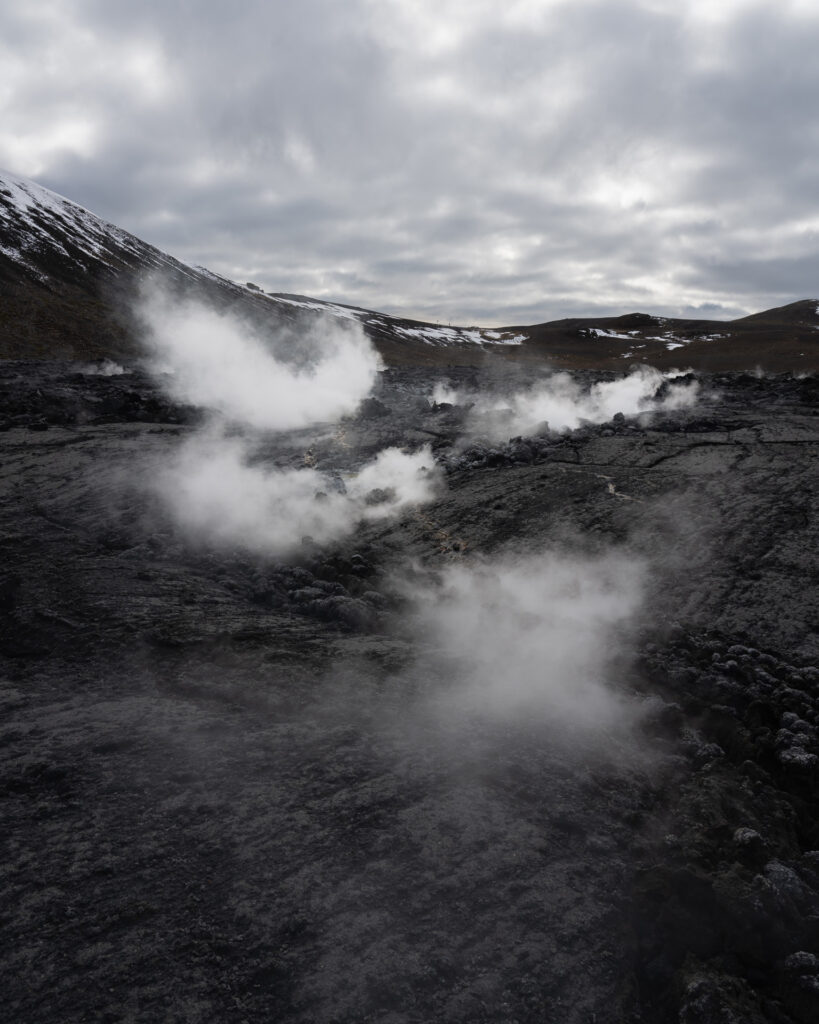
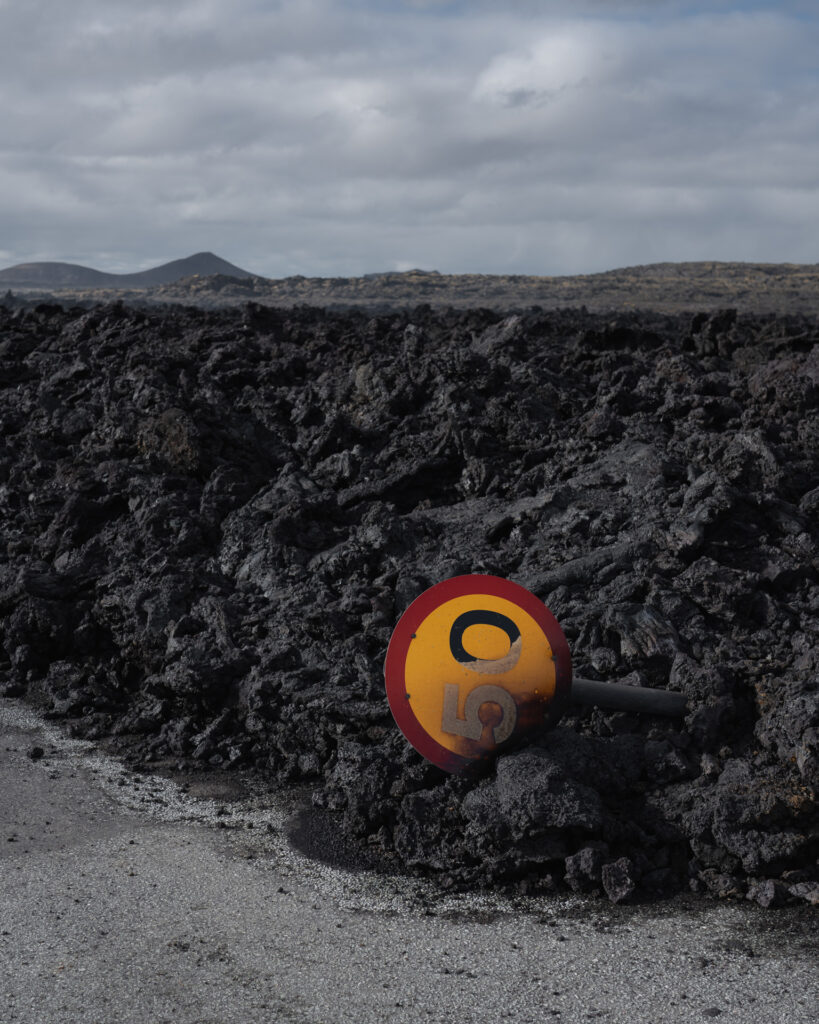
Impressions from the trip in Iceland
The natural landscapes of Iceland are simply stunning. It is a top destination for those who love nature, hiking and photo enthusiasts. From volcanoes, mountains and canyons to glaciers and waterfalls, Iceland is a country that will enchant you. Undoubtedly, a visit to whichever hot springs you choose is an experience not to be missed. Iceland is a very safe, clean and environmentally aware country ideal for all types of travellers.
The weather, especially in winter, which is cold and unpredictable, can cause some problems. But if you are properly prepared and careful, the weather cannot stand in your way. A trip to Iceland is quite costly. However, we assure you that high prices should not be a reason not to visit Iceland, as it is literally a trip of a lifetime.
